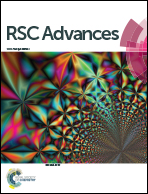Electrochemical study of Alamar Blue (resazurin) in aqueous solutions and room-temperature ionic liquid 1-butyl-3-methylimidazolium tetrafluoroborate at a glassy carbon electrode
Abstract
Electrochemical behaviour of Alamar Blue (resazurin) at a glassy carbon electrode in aqueous buffered solutions and room-temperature ionic liquid 1-butyl-3-methylimidazolium tetrafluoroborate, [C4mim][BF4], was studied using the cyclic voltammetry, chronoamperometry and chronocoulometry techniques. Our data confirm that the electrochemical reduction of resazurin in aqueous solutions takes place in two processes. In the first step, the cyclic voltammogram reveals an irreversible two-electron process leading to resorufin, whereas in the second step, cyclic voltammogram displays a reversible two-electron process related to the formation of dihydroresorufin. In [C4mim][BF4], however, our voltammetric data indicate that the reduction of resazurin takes place in two one-electron processes. The diffusion coefficient of resazurin in aqueous buffered solution and in [C4mim][BF4] was also determined using the both single potential-step chronoamperometry and chronocoulometry techniques. It is found that the diffusion coefficient varies from 8.5 × 10−7 cm2 s−1 in aqueous solution to 1.2 × 10−7 cm2 s−1 in [C4mim][BF4]. The orientation of adsorbed resazurin on the surface of glassy carbon electrode was also estimated. It is found that the orientation of the adsorbed resazurin at glassy carbon surface is edgewise.


 Please wait while we load your content...
Please wait while we load your content...